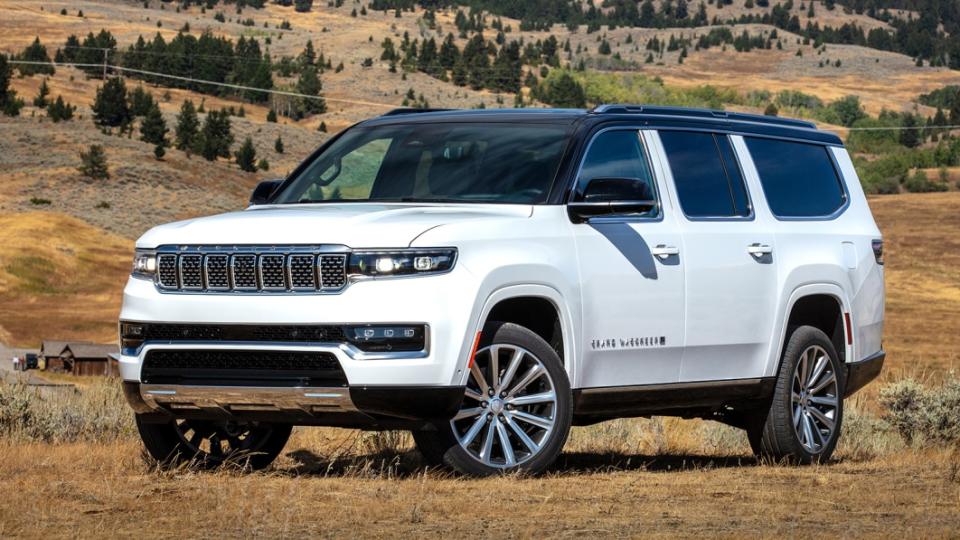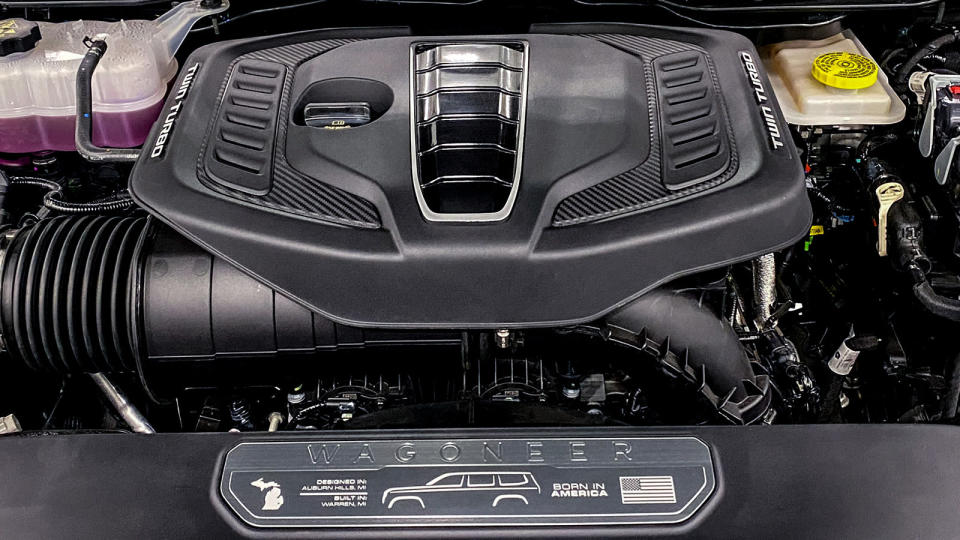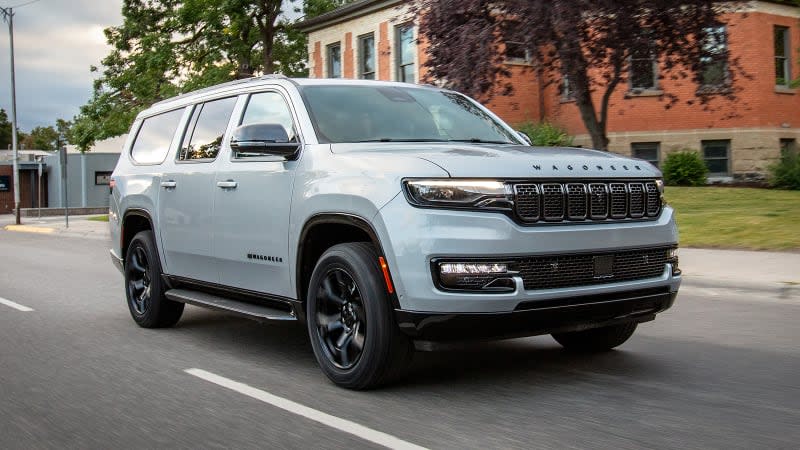2023 Jeep Grand Wagoneer L First Drive Review: Bigger, stronger, thriftier

Jeep's venture into full-size SUVs with the Wagoneer and Grand Wagoneer has gone impressively well. Our time with the big brutes has been mostly excellent, with gorgeous cabins, refined driving characteristics and very usable space. But the main problem with the trucks was their incredibly thirsty V8 engines. Smooth and lovely sounding, but not cheap or environmentally friendly to keep fueled. But Jeep has addressed this and, weirdly, it comes in even bigger versions of the SUV. It's the new Hurricane line of twin-turbo straight-six engines, and until they trickle down into the smaller Wagoneer models, we can't help but overwhelmingly recommend the longer L varieties over their shorter twins. And you may even want to pick them over options from Ford, GM and Toyota.
There are two versions of the Hurricane six-cylinder. They both have 3.0 liters of displacement and a pair of turbochargers. The basic version comes in the regular Wagoneer L and makes 420 horsepower and 468 pound-feet of torque on premium fuel, though it can run on regular. Compared to the 5.7-liter V8 it replaces, the Wagoneer L's straight-six makes 28 more hp and 64 more lb-ft. The Grand Wagoneer L gets the Hurricane 510, which makes 510 hp and 500 lb-ft, and it requires premium fuel. This six makes 39 more ponies and 45 more lb-ft than the 6.4-liter V8 it replaces.

Not only are these six-cylinder engines more potent than their V8 counterparts, they're more efficient, even when they're moving more truck. The V8 Wagoneer with two-wheel drive gets 16 miles per gallon in the city, 22 on the highway and 18 in combined driving. While final EPA numbers haven't been given, Jeep estimates that the I6 Wagoneer L will get 17/24/20 mpg. That's a 2-mpg improvement overall with a bigger vehicle, and although that may not seem like a lot, when you're talking about fuel economy in the teens, it actually represents a huge fuel savings. With four-wheel drive, the gains are similar, with the V8 Wagoneer getting 15/20/17 mpg, while the I6 Wagoneer L gets 16/23/19. These numbers top the Ford Expedition Max and Chevy Suburban with gas engines. The diesel GM trucks do much better, but with substantially less power and with diesel fuel costs.
The improvement from V8 Grand Wagoneer to I6 Grand Wagoneer L is less noticeable, as the short V8 version gets 13 mpg city, 18 highway and 15 combined, while the long six-cylinder one gets 14/19/16. Those are official EPA numbers, by the way. And the EPA revealed something else interesting that Jeep hasn't totally confirmed: a short-wheelbase Grand Wagoneer with the six-cylinder (which leads us to believe the regular, short Wagoneer will get the I6 eventually, too). That configuration brings economy up to 14/20/17. It's not as efficient as the Ford Expedition Max, but it does match the Suburban with the 6.2-liter V8 while providing more power and torque.
Long, spec-laden story short, the new Hurricanes are better in every measurable way than the V8s. They're more powerful and more efficient, and in the case of the standard six-cylinder, it's about the most efficient option in the full-size segment. But how are they in practice?
Well, they're great. Throttle response is admittedly a tad less sharp than the V8s, but only a tad. And what you trade in a bit of throttle response, you get back in much more low-down torque. You don't have to work this engine very hard to get moving. The turbos spool quickly and power comes on smoothly. Indeed, the entire engine is notably smooth and quiet. Part of this is due to Jeep adding additional sound insulation on the oil pan, engine block, fuel rails and even a thicker dash pad. According to Jeep, the cabin noise is actually 5 decibels lower than with the V8 models. Our ears aren't exactly calibrated that precisely, but it sure is quiet in the cabin, save for the very light hum when matting the throttle. As for the eight-speed automatic hooked up to these engines, it's suitably silky, though not exactly quick on changes. But that's entirely fine for comfy cruisers like these.
Between the standard-output Wagoneer L and the Grand Wagoneer L, the latter definitely does feel gutsier when you're hammering it. But it's a bit academic. Yes, it feels faster, but the regular one feels far from underpowered. And considering the comparatively large fuel economy difference, we'd definitely opt for a regular Wagoneer L and just option it up to get it close to a Grand Wagoneer.
The obvious question of course, is, are the short-wheelbase Wagoneer models getting the Hurricane? Well, Jeep hasn’t said yet. But the EPA already lists the Grand Wagoneer with the Hurricane 510. We’re betting that both will get it, but possibly as a mid-year update or for the 2024 model year. It’s likely that, since production is just ramping up on the new engine, Jeep is restricting the engine allocations to the newest, most-expensive versions of the SUVs (the long ones), and will phase them in to the short models once the supply is steady.

 Yahoo Autos
Yahoo Autos 

